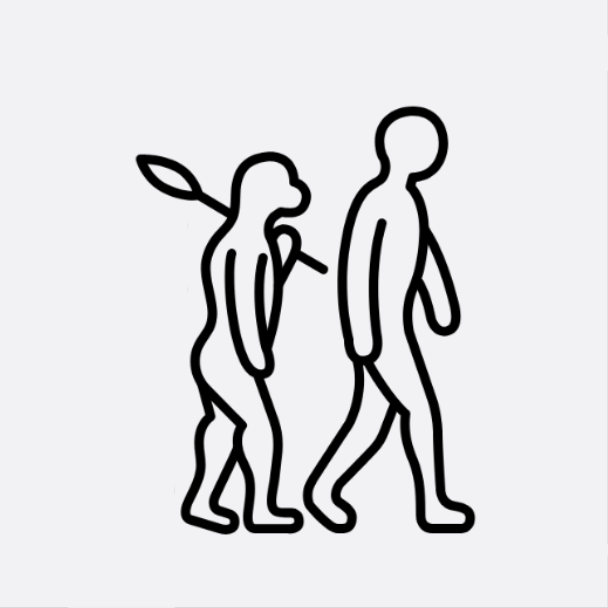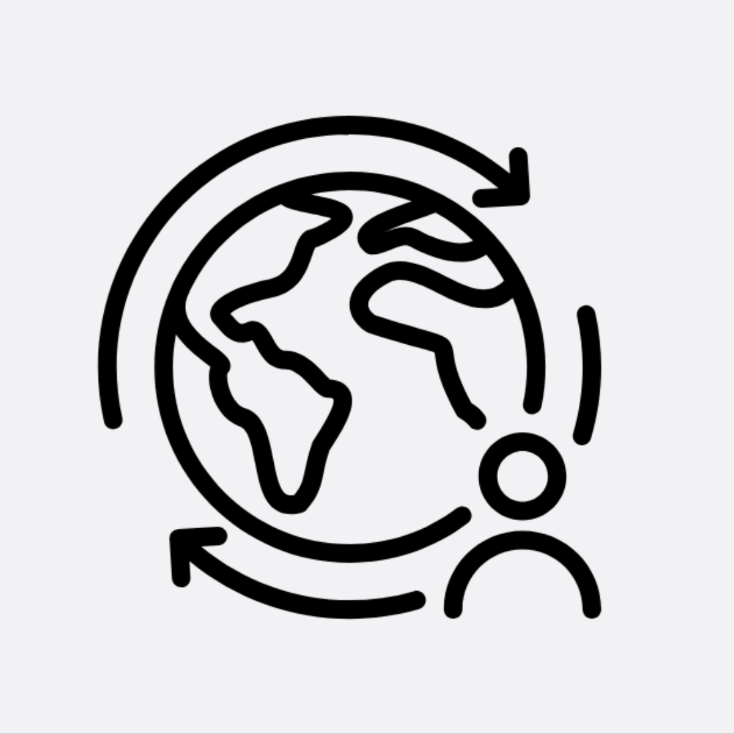
Big Bang
13.7 Billion Years AgoNewton's Third Law of Motion states that "For every action, there is an equal and opposite reaction." However, scientists can only guess what ca...
More

First Stars Form
13.4 Billion Years AgoHydrogen atoms begin to cluster together under gravity, and around 150 million years after the Big Bang, this leads to the formation of the first stars—and th...
More

First Galaxies Form
13.2 Billion Years AgoGas and stars began clumping together under gravity, forming proto-galaxies that were small and irregular in shape, containing only a few hundred million stars....
More

Our Sun Forms
4.6 Billion Years AgoOur Sun formed approximately 4.6 billion years ago from a dense cloud of gas and dust within a molecular cloud. Gravity caused the cloud to collapse, triggering...
More

Earth Forms
4.5 Billion Years AgoInitially, lots of debris matter orbited the Sun, and eventually, enough came together in a clump to generate a gravitational pull, which drew other nearby debr...
More

Oceans Form
3.8 Billion Years AgoBacteria and archaea (single-celled living organisms) are the first life on Earth and begin forming as soon as there are oceans.

First Plants
3 Billion Years AgoPlankton (which can be as small as a single cell) forms. They absorb carbon dioxide (CO₂) from water, use energy from the sun (in photosynthesis), and releas...
More

First Animals
600 Million Years AgoWhile plants make their own food via photosynthesis, animals must consume other organisms for energy. The first animals to evolve include sponges (which do not...
More

Eyes
550 Million Years AgoAnimals, such as jellyfish have simple light-sensitive cells (ocelli) that could detect light and darkness. Eventually, eyeballs form and various species have ...
More

Two Eyes; Gills
520 Million Years AgoMost animals with eyes now have only two because this allows the best depth perception. Gills develop, allowing early animals to extract oxygen efficiently fro...
More

Vertebrates
500 Million Years AgoThe first vertebrates looked like a tiny eel (about 2cm long).

Sharks
450 Million Years AgoOne of the earliest known shark-like species is Cladoselache.

Jawed Vertebrates
400 Million Years AgoPreviously, animals were limited to filter-feeding. The ability to bite and chew allows them to consume a wider variety of foods, including larger and more nut...
More

Vertebrates Move Onto Land
375 Million Years AgoThe Earth's oxygen-rich atmosphere creates the ozone layer, protecting Earth from harmful radiation and making life outside the ocean possible. Early land...
More

Dinosaurs
230 Million Years AgoDinosaurs evolved from small reptiles, and eventually, there were about 1,000 different species. Some were carnivores and others were herbivores; some walked o...
More

Mammals
225 Million Years AgoEarly mammals were small, nocturnal insect-eaters that rarely grew longer than a foot. During the nearly 200 million years of dinosaur dominance, mammals quietl...
More

Continents Split
175 Million Years AgoThe northern supercontinent (which became North America, Europe, and Asia) separated from the southern supercontinent (which became South America, Africa, Antar...
More

Birds
150 Million Years AgoBirds evolved from theropod dinosaurs, which included T. rex and Velociraptor. Feathers originally evolved for insulation, not flight. Bird ancestors graduall...
More

Crocodilians
85 Million Years AgoAlligators and crocodiles did not evolve from dinosaurs but they share common ancestors.

Madagascar Separates
80 Million Years AgoAnimals living on the island included lemurs, tenrecs (similar to hedgehogs but are more closely related to elephants), fossa (resembling a small cougar), chame...
More

Asteriod Impact
65 Million Years AgoAn asteroid 6 miles wide hits the Earth. Every creature on Earth weighing over 50 pounds goes extinct, but the small mammals survived. The first primates (for...
More

Further Continental Separation
60 Million Years AgoNorth America separated from Europe as the Atlantic Ocean expanded.

Modern Continental Configuration
50 Million Years AgoIndia collided with Asia creating the Himalayas. Australia drifted northward, and Antarctica became isolated at the South Pole, allowing the Antarctic Circumpo...
More

Grass Growth
7 Million Years AgoGrass starts to grow almost simultaneously around the world. Previously it was impossible for primates to leave their trees because there was no food source be...
More

Hominins Branch From Apes
6 Million Years AgoA group branched off the Great Apes lineage and began spending more time on land and less time in the trees. These prehumans were using their arms less and les...
More

Evolved Foot
3.5 Million Years AgoFootprints in volcanic ash indicated that hominin feet had already evolved to be optimized for upright walking.

Stone Tools
3.3 Million Years AgoThe oldest known stone tools were found in Kenya. These were very simple and used only for pounding. Other animal species that use tools include chimpanzees, ...
More

Lucy
3.2 Million Years AgoA female Australopithecus afarensis died in what is now Ethiopia. Her body was buried in soil that was rich in volcanic ash, encasing the remains and preventin...
More

Modified Stone Tools
2.5 Million Years AgoModifying a tool (such as shaping or sharpening a stone) demonstrates a more advanced level of intelligence. Hominins used sharpened stones for cutting meat, p...
More

Evolved Hand
2.4 Million Years AgoHomo habilis (lived 2.4 to 1.4 million years ago) had shortened fingers and a fully opposable thumb which increased dexterity in making and using tools.

Sweating
2 Million Years AgoHominin skin evolved to contain sweat glands over the entire body, which greatly improves body temperature regulation, allowing for endurance running. Some pri...
More

Animals Reach Galápagos Islands
2 Million Years AgoThe Galápagos Islands formed through volcanic activity and are located approximately 1,000 km (620 miles) west of mainland Ecuador. Reptiles, small mammals re...
More

Human Ancestors Leave Africa
1.8 Million Years AgoHominins (including homo erectus, homo heidelbergensis, and others) migrated to the Middle East and along coastal routes into southern Asia and Indonesia. Thes...
More

Hand Ax
1.6 Million Years AgoHominins developed the ability to create tools that are sharp and strong enough to use on materials harder than meat and plants. Handles were not added until a...
More

Hair reduction
1.5 Million Years AgoReduction in body hair allowed hominins to stay cool during prolonged activity in hot climates. It also reduced the number of parasites.

Controlled Use of Fire
800,000 Years AgoEarth is rather unique because it can support fire. Several planets and moons have lightning and lava (ignition sources), but Earth has an abundant source of m...
More

Hominin Brain Growth
800,000 Years AgoBeginning of the most rapid increase in hominin brain size (relative to body size). The fastest pace of brain enlargement took place between 800,000 and 200,000...
More

Pre-Human Reach England
500,000 Years AgoFossils from Homo heidelbergensis were found on the southern coast of England.

Neanderthals
500,000 Years AgoLived from about 500,000 to 40,000 years ago, mostly in Northern Africa, Europe, and Western Asia. They were better adapted to living in colder climates, lived...
More

Building Shelters
400,000 Years AgoHominins started building their shelters instead of relying on caves and other natural shelters.

Homo sapiens
300,000 Years AgoHomo sapiens (aka humans) are separated from other hominins by their large brains, advanced tools, symbolic thought, complex social structures, and adaptability...
More

Use of Speech
200,000 Years AgoHumans now have a huge advantage over every other species on Earth and become exponentially smarter.

Human Population
200,000 Years AgoAbout 50,000.

Clothing
170,000 Years AgoHumans begin using animal hides and plant fibers to make clothing.

Ice Age Begins
115,000 Years AgoAround 115,000 years ago, ice covered about 10% of the Earth's surface (similar to today). Over the next 95,000 years, ice would eventually spread to cove...
More

Jewelry
100,000 Years AgoHumans start using personal adornments like beads and jewelry.

Human Population
100,000 Years AgoAbout 100,000.

Toba Catastrophe
74,000 Years AgoHumans (still mostly living in Africa) are impacted by prolonged droughts likely caused by the eruption of the Mount Toba supervolcano in present-day Indonesia....
More

Human Population
74,000 Years AgoAbout 10,000.

Burial of Dead
70,000 Years AgoThere is evidence of intentional burials as far back as 100,000 years ago. By 70,000 years ago, humans were using dedicated spaces for burials and leaving tool...
More

Humans Leave Africa
70,000 Years AgoAlthough evidence shows that some humans left Africa prior, large populations began leaving around 70,000 years ago. First to the Middle East and then along th...
More

Humans Reach Australia
65,000 Years AgoThis indicates their ability to navigate the open ocean.

Bow & Arrow
64,000 Years AgoThe first use of a bow and arrow with stone-tipped arrows. Humans have likely used a wooden bow and sharpened wooden arrows for tens of thousands of years, but...
More

Cave Painting
64,000 Years AgoThe oldest cave paintings have been found in Spain (64,000 and 41,000 years ago), Indonesia (45,000 years ago), and France (33,000 years ago).

Humans Arrive in Europe
60,000 Years AgoHumans spread across Europe and there is some interbreeding with Neanderthals.

Musical Instruments
50,000 Years AgoFlutes made of bone have been found in Slovenia (50,000 years ago) and Germany (40,000 years ago). Percussion instruments have been found across the globe, suc...
More

Human Population
50,000 Years AgoAbout 1 to 2 million.

Fishing Tools
40,000 Years AgoEarliest fishing tools like spears and hooks.

Pottery
20,000 Years AgoThe earliest known pottery was found in China (from 20,000 years ago), Japan (16,000 years ago), and Russia (15,000 years ago), Africa (12,000 years ago), and t...
More

Glacial Maximum
20,000 Years AgoIce covers 30% of the Earth's surface (compared to 10% today), and sea levels are 300 to 400 feet lower than they are today. Ice now begins to recede, whi...
More

Humans Reach North America
19,999 Years AgoHumans crossed the Bearing land bridge.

Spear Throwers
17,000 Years AgoHumans began using spear throwers (atlatls) to hunt larger game and at a distance. Archaeologists have found sharpened spears dating from 400,000 years ago, but...
More

Humans Reach South America
14,000 Years AgoAt this point, humans have reached everywhere on the planet except some remote islands like Hawaii and Easter Island, which were not inhabited until about 1,500...
More

Organized Conflict
13,400 Years AgoThe earliest known battle between groups of humans is believed to have occurred at the site of Jebel Sahaba, located near the Nile River. Archaeologists uncove...
More

Younger Dryas
12,900 Years AgoWhile the Earth's temperature had been steadily warming as the ice receded, there was an abrupt decrease in temperature - especially in the Northern Hemisp...
More

Brewing of Beer
12,000 Years AgoFirst in Turkey (12,000 years ago), then China (9,000 years ago), Mesopotamia and Egypt (6,000 years ago). Prior to this, humans lived mostly in groups of fewe...
More

Monumental Religious Sites
12,000 Years AgoThe construction of large communal structures suggests organized religion or shared spiritual beliefs. The earliest example is Göbekli Tepe (Turkey) which inc...
More

End of Ice Age
11,700 Years AgoThe melting of the ice creates many rivers – the Nile, the Tigress and Euphrates, the Yellow and Yangzi in China. These lands are fertile and make it easier ...
More

Farming & Animal Domestication
10,000 Years AgoWhen farming, the land becomes less fertile each year as nutrients in the soil are used up. Farming begins along river banks because annual flood waters resuppl...
More

Surgeries
10,000 Years AgoSkulls with circular holes that show signs of healing (indicating the person survived the procedure) have been found in France, Ukraine, and South America. The...
More

Human Population
10,000 Years AgoAbout 5 million.

Wine Fermentation
9,000 Years AgoWine became integral to rituals, feasting, and social gatherings in early societies. Its use was confirmed by the discovery of clay jars containing chemical tr...
More

Irrigation
8,000 Years AgoFirst in Mesopotamia (8,000 years ago), then Egypt along the Nile River (7,000 years ago), and the Indus Valley in South Asia (5,000 years ago).

Humans Using Copper
7,000 Years AgoHumans first began smelting copper in the Fertile Crescent, Turkey, and Europe. Initially, they created tools for agriculture, construction (chisels, awls), an...
More

Cities
7,000 Years AgoThe city of Çatalhöyük (Turkey) reaches a population of 5,000.

Plowing
6,000 Years AgoPlowing allows farming in places other than riverbeds by bringing up nutrients from the under-soil to the top. It began in Mesopotamia where plows were made of...
More

Horses Domesticated
6,000 Years AgoFirst, in Asia, they quickly became the most important domesticated animal.

Opium Use
5,500 Years AgoFirst in Mesopotamia, then in Egypt. It is unknown if it was first used for medicinal (for pain relief) or recreational purposes, but likely, one was followed ...
More

Wheel
5,500 Years AgoFirst in Mesopotamia used for making pottery.

Writing
5,200 Years AgoFirst emerged in Mesopotamia with the development of cuneiform by the Sumerians.

Larger Cities
5,000 Years AgoFive cities (in Mesopotamia, the Indus Valley, and Egypt) have over 30,000 people.

Use of Bronze
5,000 Years AgoA copper ax would dull quickly, but humans eventually learned that mixing 10% tin with 90% copper (creating bronze) would greatly strengthen the metal and allow...
More

Wheel and Axel for Transportation
5,000 Years AgoArchaeological finds from Mesopotamia, Europe, and the Indus Valley include depictions of carts with four wheels in paintings and carvings as well as actual whe...
More

Human Population
5,000 Years AgoAbout 20 million.